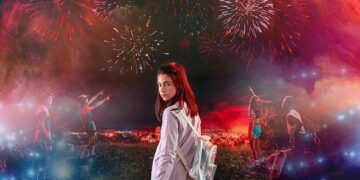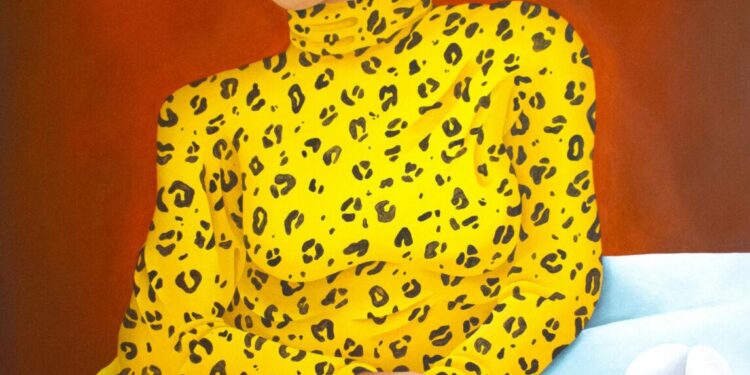Embracing Slow Looking: A Pathway to Deeper Understanding in Art and Science
In an era marked by rapid consumption and short attention spans, a revolutionary practice known as “slow looking” is gaining traction among artists and scientists alike. This technique promotes profound observation and contemplation, allowing individuals to create unexpected links across various fields of study. In a time when information is often presented in quick snippets, slow looking encourages participants to fully engage with their subjects, leading to deeper insights and creative breakthroughs. As discussed in a recent piece from The Conversation, this intentional method not only boosts creativity but also connects the realms of art and science through a common language of inquiry. This article will explore the fundamentals of slow looking, its significance for interdisciplinary collaboration, and the wealth of knowledge that unfolds when we take the time to truly observe.
The Connection Between Art and Science Through Slow Looking
In our fast-paced world where immediate results are often prioritized, slow looking has emerged as an essential practice for both artists and scientists seeking to enhance their observational abilities while fostering innovative thought processes. By adopting a more deliberate pace, this approach invites individuals to delve into the intricate details found within artworks or scientific phenomena. Such contemplative engagement creates an environment ripe for unexpected revelations. Artists may uncover new techniques or themes that resonate with their creative vision; similarly, scientists might identify previously unnoticed patterns within their research.
The intersection between these two disciplines is significant; it not only stimulates creativity but also cultivates a deeper understanding of each field’s unique perspectives. As we explore these connections further through slow looking practices, we find opportunities for collaboration that benefit both art and science alike.
- What insights can emerge from taking our time during observation?
- How might artistic expression influence scientific exploration?
- Which methodologies from one discipline could spark innovation in another?
The answers to these questions suggest that observing—whether it be an artwork or a scientific specimen—can foster mutual appreciation beyond conventional boundaries. This comprehensive understanding paves the way for richer dialogues between artists and scientists alike while propelling collective knowledge forward.
Nurturing Creativity: The Advantages of Mindful Observation for Artists and Scientists
Meditative observation provides both artists and scientists with avenues to deepen their comprehension within their respective domains. By slowing down enough to immerse oneself fully in any subject matter, practitioners can reveal subtleties that may otherwise go unnoticed during cursory glances. This method fosters broader perspectives by enabling individuals to connect seemingly unrelated ideas seamlessly.
This practice also nurtures presence—a state conducive not only for enhanced focus but increased productivity as well. When artists or scientists allow themselves mental space while observing closely, they frequently enter flow states conducive to innovative thinking. The benefits include:
- Cultivated Creativity: Relaxed minds are fertile ground for new ideas.
- Keen Attention: Heightened awareness leads toward richer understandings.
- Dramatic Emotional Engagement: Deep interactions evoke stronger feelings which inform creative endeavors.
| Discipline | Potential Discoveries |
|---|---|
| Artistic Practice | A fresh array of visual narratives; enriched storytelling techniques |
If you wish incorporate slow looking into your everyday life consider setting aside specific times dedicated solely towards observation activities such as enjoying morning coffee outdoors taking leisurely strolls amidst nature’s beauty etc., creating environments free from distractions enhances effectiveness significantly! While engaging actively focus on these key aspects:
- Breathe Before You Observe: Take deep breaths allowing heart rates settle down before diving into observations!
- Examine Details :Pay close attention colors shapes textures patterns letting thoughts flow freely connecting them together!
- Reflect :Afterward jotting down impressions feelings experienced during session helps solidify learning outcomes!
< / ul >
< p >Additionally consider organizing group activities promoting shared experiences around collective observations! Here are some suggestions:< / p >
Activity Description
< / tr >
< /thead >< td >Nature Exploration Together walk park spending five minutes focusing single tree flower.< td > < td >Art Exploration A visit gallery spending ten minutes discussing impressions one artwork collectively.< td > < td >Photography Challenge A challenge where each participant captures texture sharing evoked emotions afterwards.< td > < / tbody >
< / table >Reflections on Slow Looking’s Impact on Knowledge Creation
In conclusion , amidst today’s landscape dominated by instant gratification & rapid information exchange , embracing practices like “slow-looking” emerges powerful antidote benefiting both artistic & scientific communities . Taking moments pause deeply engaging subjects — whether canvases complex datasets natural phenomena — opens doors unexpected insights novel connections . As navigate increasingly intricate world , value patience mindfulness investigations cannot be overstated . Ultimately , adopting this approach enriches understanding art science fostering appreciation intricate relationships binding them together reminding us sometimes answers sought lie quiet moments reflection rather than hustle immediacy urging all pause look closer .
- Reflect :Afterward jotting down impressions feelings experienced during session helps solidify learning outcomes!






























